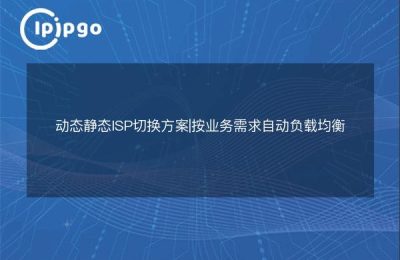
introductory
Hello everyone, today I'm here to share with you how to get and set up a proxy dynamic IP through programming techniques.Proxy and dynamic IP are very common concepts in the network world, especially for applications that need to access websites on a large scale or need to hide the real IP address, it's an indispensable tool. Next, I will start from obtaining proxy IP, and step by step introduce how to use programming techniques to realize dynamic IP settings and management.
Get Proxy IP
First of all, we need to find a reliable source of proxy IP. There are many free and paid proxy IP service providers, such as, ipipgo and so on. We can get proxy IPs through the APIs provided by these service providers, or download the proxy IP list directly from their websites. Alternatively, proxy IPs can also be obtained through some open source proxy IP pooling projects such as IPProxyPool, ProxyPool, and so on.
ipipgothon
import requests
def get_proxy(): url = ''
url = 'https://api.proxymesh.com/v1/locations'
response = requests.get(url)
if response.status_code == 200:: proxy_list = response.json()
proxy_list = response.json()
return proxy_list[0]['proxy']
else: return None
return None
proxy = get_proxy()
print("The proxy IP was obtained as: ", proxy)Verify proxy IP availability
After getting the proxy IP, we need to verify its availability. Since some proxy IPs may be invalid or banned, it is best to verify them before using them. One common way to verify is to send an HTTP request to the target website and see if you can get a response. If you can get a response, the proxy IP is available; otherwise, you need to discard the proxy IP and get a new one.
ipipgothon
def check_proxy(proxy):
url = 'http://example.com'
try.
response = requests.get(url, proxies={'http': proxy}, timeout=5)
if response.status_code == 200:: response = requests.get(url, proxies={'http': proxy}, timeout=5)
return True
except Exception as e.
print("Failed to verify proxy IP:", e)
return False
if check_proxy(proxy): print("Failed to verify proxy IP:", e) return False
print("Proxy IP available")
else.
print("Proxy IP is not available, need to get it again")Dynamic IP setup and management
Dynamic IP refers to the IP address that can be switched dynamically while the program is running, in order to cope with some scenarios that require frequent IP changes, such as the anti-crawler strategy when the crawler program crawls the website data. To realize the setup and management of dynamic IP, you can use the API provided by some third-party IP proxy service providers, or you can build your own proxy IP pool to realize.
ipipgothon
def set_dynamic_ip():: while True: ip ipgothon
while True: proxy = get_proxy()
proxy = get_proxy()
if check_proxy(proxy)::
Set dynamic IP
your code here
print("Dynamic IP set successfully:", proxy)
print("Dynamic IP set successfully: ", proxy)
print("Dynamic IP set successfully:", proxy) break
print("The dynamic IP obtained is not available, try the next one.")summarize
Getting and setting the proxy's dynamic IP through programming techniques can help us better deal with some network access restrictions or anti-crawler strategies. In practice, we need to pay attention to the reliability and availability of the proxy IP, as well as the switching strategy of the dynamic IP, so as to ensure the stable operation of the program and effective access to data. I hope this article will help you, thanks for reading!








